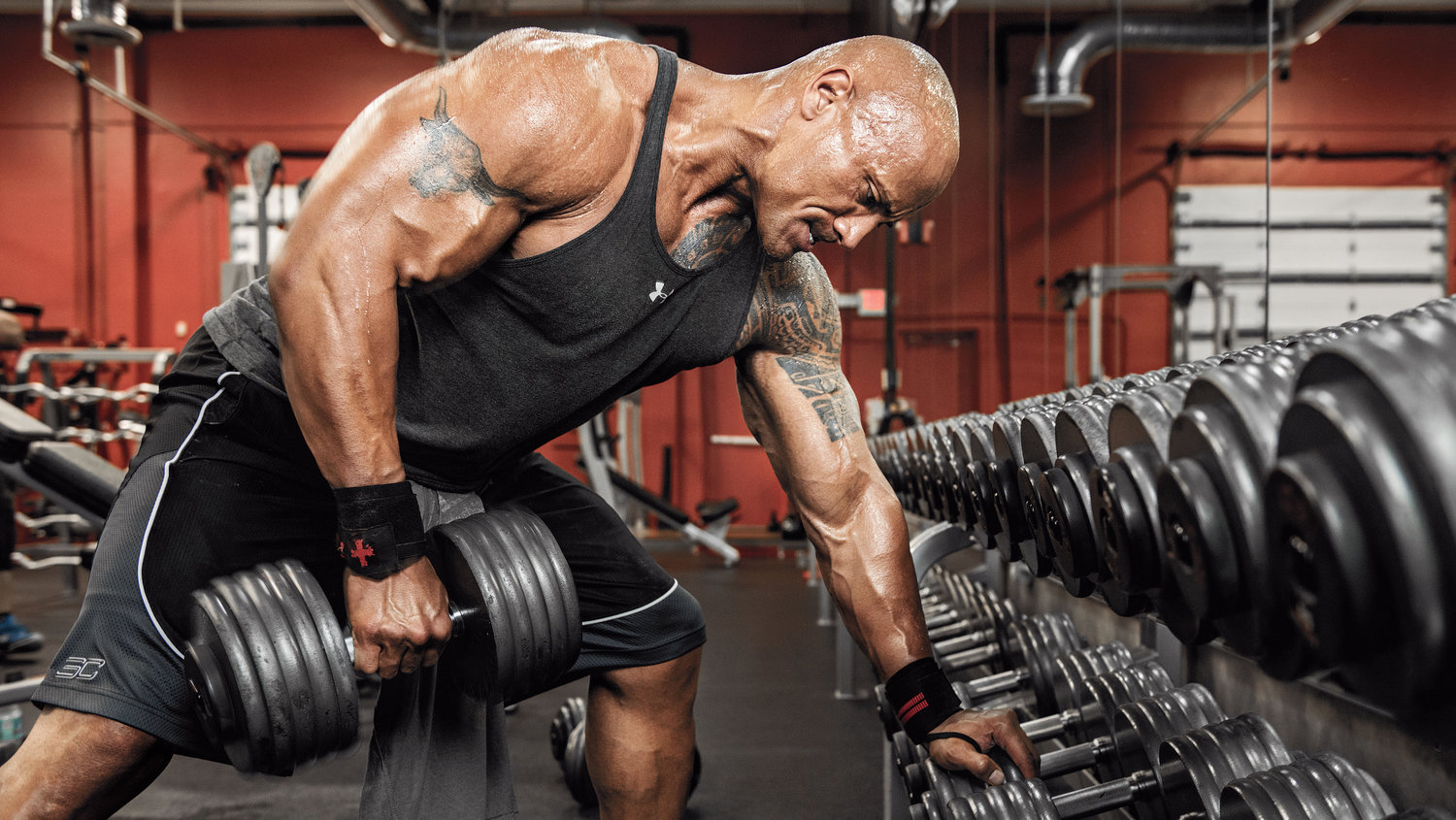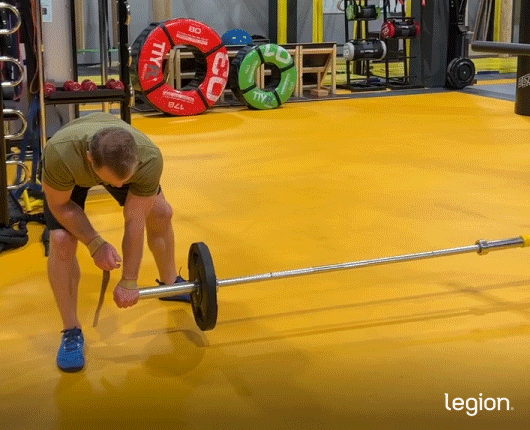The Best Row Variations for Size and Strength
Written by The Boostcamp Editors
Build your back up with the best row variations
When it comes to building your back muscles, there are so many different movements you can incorporate into your lifting program, as the back is the second biggest muscle to train, next to your legs. Whether you are training for bodybuilding or powerlifting, the back is an essential muscle to build up.
Now, when focused on building a strong and thick back, you do things like pull-ups, chin ups, and heavy lat pulldowns for the width, but then for the thickness what should you do? Deadlifts are usually great for creating strong back muscles are great for thickness, but the rows help to really isolate the back muscles and give you a true turtle shell. However, there are so many different variations of rows, from dumbbell to barbell, which ones do you choose to help your overall progression with your gut reaction in mind?
We are here to help you discover the best variations for rows that there are, so throw on your weightlifting belt and your straps, and let's dive in.
Table of Contents
Introduction
Barbell Row
Dumbbell Row
Machine/Cable Row
Kroc Row
Helms Row
Meadows Row
Pendlay Row
Seal Row
Rows in a Workout Program
FAQs
Conclusion
The Barbell Row
What is the Barbell Row?
The barbell row is a compound exercise that targets the upper and middle back muscles. It is a staple in many strength training programs, as it is a great row variation.

How to do the Barbell Row:
Stand with your feet shoulder-width apart and bend at the waist, keeping your knees slightly bent.
Hold the barbell with an overhand grip, slightly wider than shoulder-width.
Pull the barbell towards your upper abdomen, squeezing your shoulder blades together.
Slowly lower the barbell back to the starting position.
Why do the Barbell Row?
The barbell row is an excellent exercise for building strength in the back muscles and improving posture.
Pros of Barbell Row
Allows for heavier weight, leading to increased muscle mass and strength.
Easier to progressively overload in smallest weight increments.
Best “bang for your buck” row if you want to train your entire back.
Cons of Barbell Row
May place strain on the lower back if not performed correctly.
Puts more stress on the entire posterior chain muscles.
Does not isolate any smaller back muscle groups.
The Dumbbell Row
What is the Dumbbell Row?
The dumbbell row is a unilateral row variation that targets the lats, rhomboids, and traps. It can help correct muscle imbalances and improve overall back strength.
How to do the Dumbbell Row:
Stand beside a flat bench and place one knee and hand on the bench.
Hold a dumbbell in the other hand with a neutral grip.
Keeping your back straight and parallel to the floor, pull the dumbbell towards your hip, squeezing your shoulder blades together.
Slowly lower the dumbbell back to the starting position.
Why do the Dumbbell Row?
The dumbbell row allows you to focus on each side of your back individually, which can help correct muscle imbalances and improve overall back strength.
Pros of the Dumbbell Row
Unilateral exercise so it helps correct muscle imbalances.
Places less stress on the lower back, especially if you use off-hand support.
Can emphasize different angles to focus on different back muscles.
Cons of Dumbbell Row
Harder to progressive overload than barbells.
Requires access to dumbbells, may be more challenging for beginners.
Machine Row / Cable Row
What is the Machine/Cable Row?
The machine row is a back exercise that uses a cable or lever-based machine to target the lats, rhomboids, and traps.
How to do the Machine/Cable Row:
Adjust the seat and chest pad on the machine to your preferred height.
Sit down and grasp the handles with an overhand or neutral grip.
Pull the handles towards your chest, squeezing your shoulder blades together.
Slowly return to the starting position.
Why do the Machine/Cable Row?
The machine row provides a controlled, stable environment to perform a rowing motion, which can be beneficial for beginners or those with limited mobility.
Pros of Machine/Cable Row
Easier to learn for beginners due to limited free range of motion.
Chest support means putting less stress on the lower back.
Isolate the back muscles without using other supporting muscles
Cons of Machine/Cable Row
Potentially limited range of motion compared to free-weight variations.
May not engage stabilizer muscles as effectively.
Different machines may feel different if you travel a lot
The Kroc Row
What is the Kroc Row?
The Kroc row is a heavy, high-rep dumbbell row variation that focuses on building strength and muscular endurance in the upper back and your overall grip.
Unlike most rows that focus on control and “perfect” technique, Kroc rows use more body English and momentum to allow you to use heavier weights and more reps.

How to do the Kroc Row:
Stand beside a flat bench and place one knee and hand on the bench.
Hold a heavy dumbbell in the other hand with a neutral grip.
Engage your core and keep your spine in a neutral position.
Start the Kroc row with your lower body by using hip drive to help with the hardest part of the lift. This is necessary because the dumbbell is heavy.
Pull the dumbbell towards your hip, squeezing your shoulder blades together.
Perform high-rep sets with heavy weights.
Why do the Kroc Row?
The Kroc row is an excellent exercise for increasing grip strength and muscular endurance in the upper back muscles.
Pros of the Kroc Row
Excellent upper back muscle development.
Builds grip strength, improves muscular endurance.
Addresses muscle imbalances.
Cons of Kroc Row
Not advised for beginners, who should focus on perfect form.
Potentially more chance of injury due to overload and momentum.
Requires access to heavy dumbbells.
The Helms Row
What is the Helms Row?
The Helms row, created by Dr. Eric Helms, is a unique row variation that combines elements of the barbell row and cable row, providing constant tension on the back muscles.
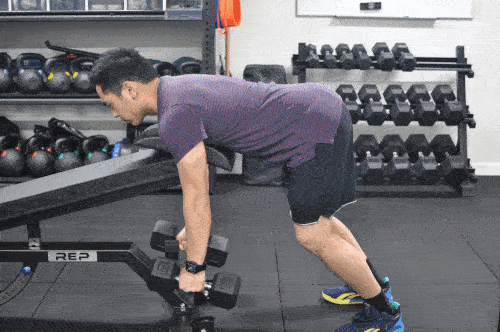
Image courtesy of ThisIsWhyImFit.com
How to do the Helms Row:
Place your chest on the end of an incline bench, with your back at a 10-20° degree.
The bench should be touching around your nipple line.
Keep your knees bent slightly but minimal during the movement.
Pull the dumbbells towards your back and keep them close to your body.
Slowly return to the starting position.
Why do the Helms Row?
The Helms row provides chest support with dumbbells, allowing you to get a good mind-muscle connection and focus on contracting your back muscles without overusing your lower back.
Pros of the Helms Row
Provides chest support to isolate the upper back and lats.
Get the fullest stretch for your back, which is key for hypertrophy.
Super easy to set up compared to other exercises.
Cons of the Helms Row
Requires some learning to setup properly.
Requires an incline bench.
Meadows Row
What is the Meadows Row?
The Meadows row is a single-arm, T-bar row variation that targets the lats, rhomboids, and traps, named after its creator, bodybuilder John Meadows (RIP to the legend).
How to do the Meadows Row:
Secure one end of a barbell in a landmine attachment or corner.
Stand perpendicular to the bar, feet in a staggered stane, and grasp the end of the barbell using a V-grip handle or with one hand cupping the other.
Bend at the waist, keeping your knees slightly bent.
Pull the barbell towards your hip, squeezing your shoulder blades together.
Slowly return to the starting position.
Why do the Meadows Row?
The Meadows row is a unique exercise that targets the upper back muscles while engaging the core and lower body for stability.
Pros of Meadows Row
Helps train your entire back without too much stress on your lower back.
Engages multiple muscle groups, unique row variation, targets the upper back.
Cons of Meadows Row
Requires access to a landmine attachment or a secure corner, may be challenging for beginners.
The Seal Row
What is the Seal Row?
The seal row is a unique row variation that removes strain from the lower back by performing the exercise on an elevated bench. This exercise targets the lats, rhomboids, and traps while also engaging the rear deltoids and biceps.
How to do the Seal Row:
Set up an elevated bench or platform, ensuring it's sturdy and stable.
Lie face down on the bench with your chest supported and your feet firmly on the ground.
Hold a pair of dumbbells or a barbell with a neutral or overhand grip, allowing the weights to hang below the bench.
Pull the weights towards your chest, squeezing your shoulder blades together.
Slowly lower the weights back to the starting position.
Why do the Seal Row?
The seal row is an excellent exercise for those with lower back issues, as it eliminates strain on the lumbar spine. It also helps isolate the back muscles, ensuring proper engagement and muscle growth.
Pros of the Seal Row
No strain on the lower back, so suitable for those with lower back issues.
Excellent upper back developer.
Cons of the Seal Row
Requires access to an elevated bench or platform, may be challenging to set up.
The Pendlay Row
What is the Pendlay Row?
The Pendlay row, named after its creator, weightlifting coach Glenn Pendlay (RIP), is a strict barbell row variation that starts from a dead stop on the ground. This exercise targets the lats, rhomboids, and traps while also engaging the posterior chain muscles, including the glutes and hamstrings.
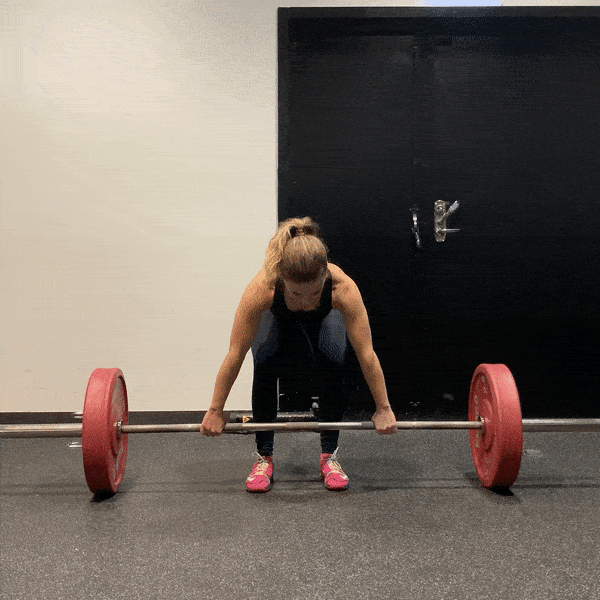
Source: https://www.strengthlog.com/
How to do the Pendlay Row:
Stand with your feet shoulder-width apart, toes pointing forward.
Bend at the hips and knees, maintaining a flat back, and grasp the barbell with an overhand grip slightly wider than shoulder-width.
The bar should be resting on the ground.
Pull the barbell towards your lower chest in a powerful, explosive movement, keeping your back flat and parallel to the floor.
Lower the barbell back to the ground, resetting between each rep.
Why do the Pendlay Row?
The Pendlay row encourages proper form and full muscle engagement by starting from a dead stop on the ground. This exercise also develops explosive power, which can translate to improved performance in other lifts.
Pros of the Pendlay Row
Promotes proper form with a dead stop at the bottom of the lift.
Develops explosive power, so it transfers well for sports and Olympic weightlifting.
Engages the posterior chain.
Cons of the Pendlay Row
May be challenging for beginners to learn technique.
Requires access to a barbell and weight plates.
Incorporating Rows in a Workout Program
Read on to learn more about these row variations, including the dumbbell prone row, what they are, how to do them, pros and cons of each, and how they can help you achieve your fitness goals. Don't forget to check out the Boostcamp App for free science-based workout programs that incorporate different row variations, such as prone incline rows, to help you build muscle and strength. You can also create your own custom routines based on these row variations below to make your own workouts, incorporating heavy loads to maximize muscle growth and strength gains. To get the most out of your back workouts, consider incorporating different rows, such as the dumbbell prone row, into well-rounded programs that emphasize progressive overload and intelligent exercise selection.
It's crucial to remember that the most important aspect of any workout routine is following the principles of progressive overload and smart exercise selection. Progressive overload ensures that you gradually increase the stress on your muscles by adding weight, increasing reps, or changing the exercise's complexity. Smart exercise selection, as recommended by reputable trainers, involves choosing exercises that effectively target the desired muscle groups and complement your specific goals.
Popular programs with different row variations
Here are a few popular programs that include these exercises:
r/Fitness Basic Beginner Routine (3x5): Another beginner-friendly program, StrongLifts 5x5, emphasizes compound lifts and linear progression. Like Starting Strength, this program includes squats in every workout, and you can add leg presses as an accessory movement to target your quadriceps and hamstrings further.
Starting Strength: A beginner-friendly program that focuses on building a strong foundation through compound exercises, including squats, deadlifts, and presses. This program incorporates squats in every workout and can be easily adapted to include leg presses as an accessory exercise.
PHUL (Power Hypertrophy Upper Lower): This intermediate-level program combines strength and hypertrophy training. The lower body workouts in the PHUL program include both squats and leg presses, ensuring a well-rounded approach to developing your leg muscles.
Alberto Nunez 4 Day Upper Lower: This 4-Day Upper Lower Program is designed by Alberto Nuñez, who is the head bodybuilding coach at 3D Muscle Journey. Alberto is an accomplished lifelong natural bodybuilder, having most recently won Mr. Universe at the 2022 WNBF.
Jim Wendler's 5/3/1 for Beginners: A versatile, intermediate to advanced program that focuses on long-term strength and muscle gains. Squats are a main lift in this program, and leg presses can be incorporated as an accessory exercise during hypertrophy-focused training blocks.
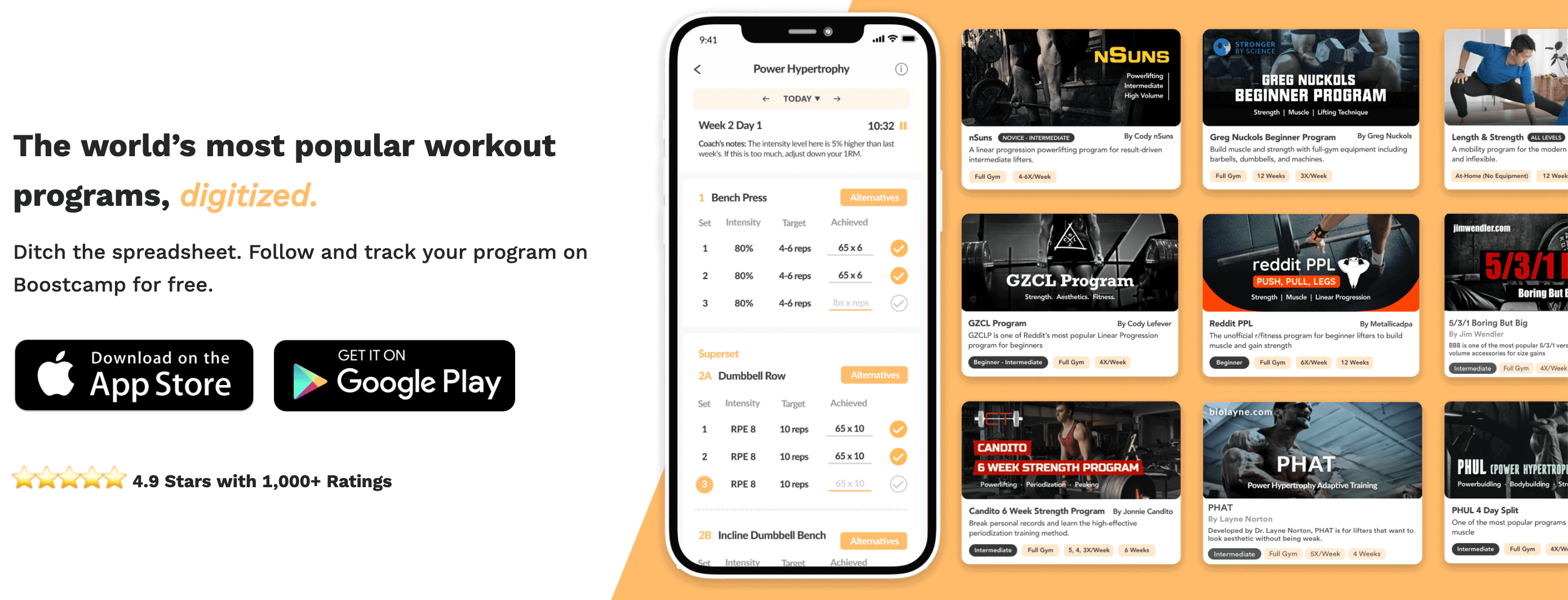
FAQs
How often should I perform row exercises in my workout program?
It's generally recommended to perform row exercises 1-2 times per week, depending on your fitness goals and overall workout routine. Be sure to allow adequate rest between sessions to promote muscle recovery and growth.
Which row variation is best for beginners?
The machine row is often recommended for beginners due to its controlled, stable environment, making it easier to learn and perform the proper technique.
Can I perform multiple row variations in the same workout?
Yes, incorporating multiple row variations into your workout can help target different muscle groups and provide variety to your training program.
What muscles do row exercises target?
Row exercises primarily target the lats, rhomboids, and traps. However, they also engage the biceps, rear deltoids, and core muscles to a lesser extent.
How can I progress with row exercises?
You can progress with row exercises by increasing the weight, altering the rep range, or incorporating more advanced variations into your workout routine.
Can row exercises help improve my posture?
Yes, row exercises can help improve posture by strengthening the upper back muscles and promoting proper alignment of the spine.
Are row variations suitable for people with lower back issues?
It depends on the individual and the severity of the issue. Some row variations, such as the machine row and dumbbell row, place less stress on the lower back. However, it's essential to consult with a healthcare professional or certified personal trainer before starting any new exercise program.
Can I perform row exercises at home?
Yes, you can perform some row exercises, such as dumbbell rows and Helms rows, at home with minimal equipment. Be sure to invest in a set of dumbbells or a barbell and follow proper form to prevent injury.
How do row exercises help build a stronger, more defined back?
Row exercises target the major muscles of the upper and middle back, helping to build muscle mass and strength. As these muscles grow and become more defined, they contribute to a stronger, more sculpted appearance.
Can I use row exercises as a primary back exercise in my workout program?
Yes, row exercises are an excellent primary back exercise, as they target multiple muscle groups and promote overall back strength and development.
Best Row Variations Conclusion
If you're looking to enhance your back workout, incorporating these eight row variations can be the key to unlocking new levels of strength and muscle growth. By targeting different muscle groups and offering a range of intensities, these exercises can help you build a stronger back and a more defined back. To track your progress and discover more effective workouts download the Boostcamp App today.
Happy rowing!
That being said, check out the Boostcamp App for over 50 FREE programs or even create your own. Boostcamp also allows you to track progress, so you know how to adjust each week. Be sure to also follow Boostcamp on Instagram and subscribe on YouTube!
